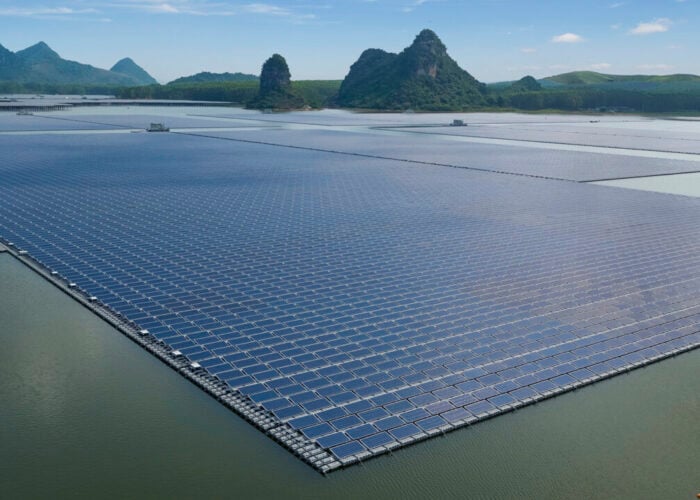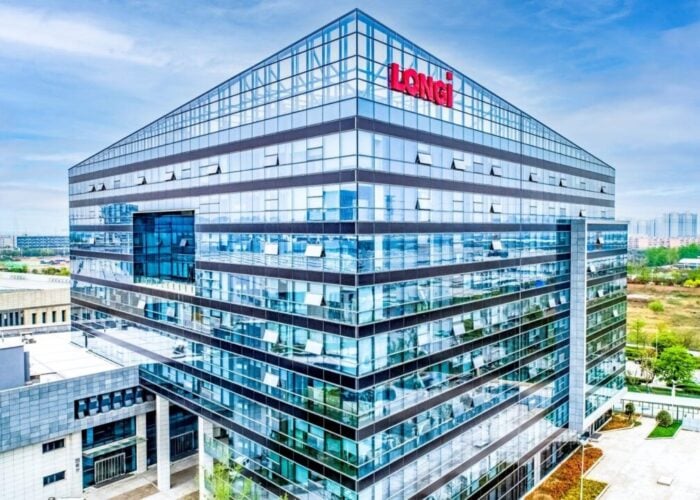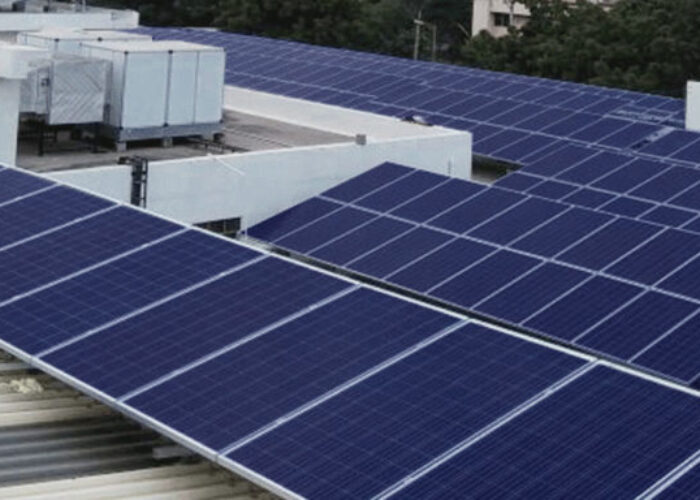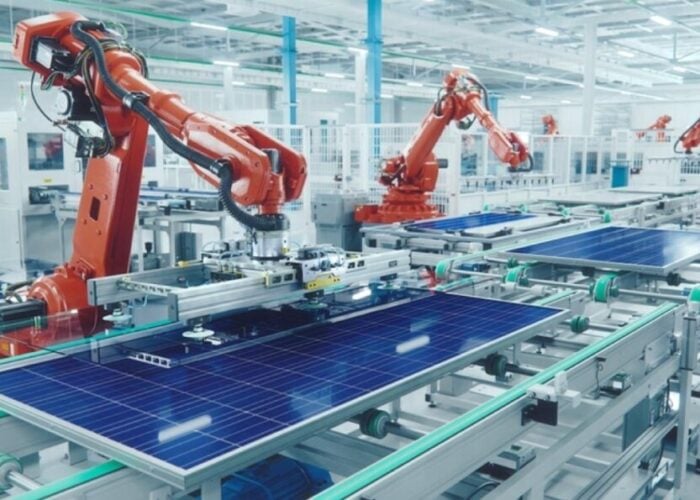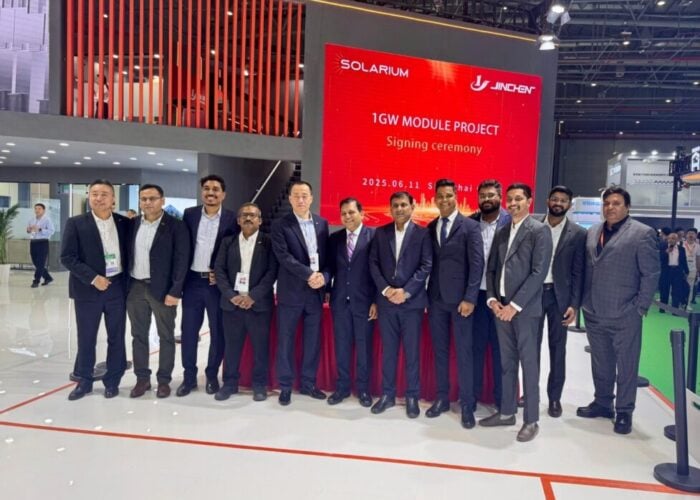
Having launched its new Vertex range of modules, Trina Solar is pushing the technology envelope as it joins the latest in a wave of manufacturers to bring 500W+ modules to market. PV Tech spoke to Dr. Franck Zhang, head of product strategy and value management at Trina Solar, to get all the details about the technology within the module.
Trina Solar’s new Vertex range of solar modules, launched at 550W with a 600W variant to follow, see the ‘Solar Module Super League’ (SMSL) member join what is quickly becoming a step-change in solar manufacturing.
Unlock unlimited access for 12 whole months of distinctive global analysis
Photovoltaics International is now included.
- Regular insight and analysis of the industry’s biggest developments
- In-depth interviews with the industry’s leading figures
- Unlimited digital access to the PV Tech Power journal catalogue
- Unlimited digital access to the Photovoltaics International journal catalogue
- Access to more than 1,000 technical papers
- Discounts on Solar Media’s portfolio of events, in-person and virtual
Emerging technologies, new wafer sizes and novel manufacturing processes are combining to produce a new era of modules, ramping up from a mainstream figure of 450W to 550W and beyond.
A key question is why has this wave of 500W+ modules emerged now? Power outputs have surged in a relatively short period of time, and the technology driving those higher outputs, including larger wafer sizes, is having a ricochet effect throughout the entire supply chain.
Zhang says among the driving factors behind this is the maturity of those technologies. Cell efficiency improvements in PERC cells has increased by as much as 0.5% each year, now sitting at almost 22.5%. PERC’s popularity – Zhang says the technology enjoys a market share of around 70-80% now – has also contributed towards those gains.
And PERC’s reign looks set to continue for some time yet with other technologies such as N-type and heterojunction still a few years behind in the development track. “The problem is overall cost,” Zhang says. “With the overall cost you still cannot compete against PERC, [and] you cannot replace PERC now I think.”
Another key technology for the Vertex module is the base of 210mm large-area wafers, the first time Trina has used the larger wafer in a full product launch. Multiple busbars are also used, with the first generation Vertex modules using 10 busbars – this could, however, increase to 12 or 14 busbars in the future as Zhang describes multi-busbar technology as the “perfect match” for 210mm wafers. “You can imagine with this big size wafer, if we use five busbar, the gap or distance in between busbar is about 40 millimetres, so you have a lot of losses because of the series resistance,” he explains.
In addition, Trina has opted for non-destructive cutting techniques when producing the module to reduce the occurrence of microcracks. Zhang says that the combination of non-destructive cutting with larger wafer sizes raises the prospect of “almost no microcracks” in the module production line. This replaces mechanical disc cutting and also poses the added benefit of reducing efficiency losses at the cell level.
High density interconnections – previous spacing of 2mm between cells has been reduced to 0.5mm – have also been implemented throughout the product range. This has been achieved by moving away from the manufacturer’s previous tiling approach to a slightly more traditional ribbon-based interconnect. Zhang said that while Trina still believes tiling will have a future in the industry, it did prompt some concerns with regards the balance of cell and module efficiency against manufacturing yield. Without any gap between the cells, Zhang said Trina’s analysis found output losses far outweighed any benefit created within the manufacturing yield. “The technology is a good idea but it's not cost effective right now,” he said.
The Vertex range will be available in both monofacial and bifacial version, the difference between the two being a frontside output gain on the monofacial of around 5W. This relates to the use of a white POE or EVA in the monofacial version. The decision to launch both version stems purely from customer interest, Zhang said, with not everyone preferring bifacial panels quite yet.
The prospect of bifacial equivalents also raises a keenly discussed topic in PV; glass, or transparent backsheet? The availability of glass is up for debate and that’s without even considering the weight advantages of a transparent backsheet. At 32.6kg for the 550W and 35.3kg for the 600W, the Vertex series are already heavyweight products and developers will be assessing these details with a fine-tooth comb.
Zhang suggests any concerns over the availability of solar-grade glass are perhaps overplayed, especially since the Vertex modules use 2mm-thick glass as opposed to the traditional 4mm. In addition, glass backsheets age better than transparent backsheets and pose none of the powdering that can sometimes be seen in older bifacial modules, impacting on the efficiency of the back side of the panel. There are further gains in the water leakage rate when using glass and the overall degradation of the panel, especially in hotter, more humid climates.
All of the above technologies combine to create a range of panels that sets Trina up for the new era of solar, firmly established within the class of manufacturers with a portfolio of products pushing 550W of power output and beyond.
But Zhang is quick to refer to Vertex not solely as a product range, but as a platform, and one which has the entire solar ecosystem, ranging from manufacturing to deployment, and even taking into account other components. This is a product Trina say has been for the industry, but in close collaboration with it as well, resulting in potentially significant gains right throughout the value chain.
PV Tech will explore more of the Vertex platform’s developments in part two of this feature, to be published later this week.
PV Tech and Trina Solar will present a webinar marking the launch of the Vertex series tomorrow (13 August 2020) at 16:00 BST. Further details on the webinar, including how to register, can be found here. Equally, PV Tech’s product review of the Vertex 550W/600W can be read here.

